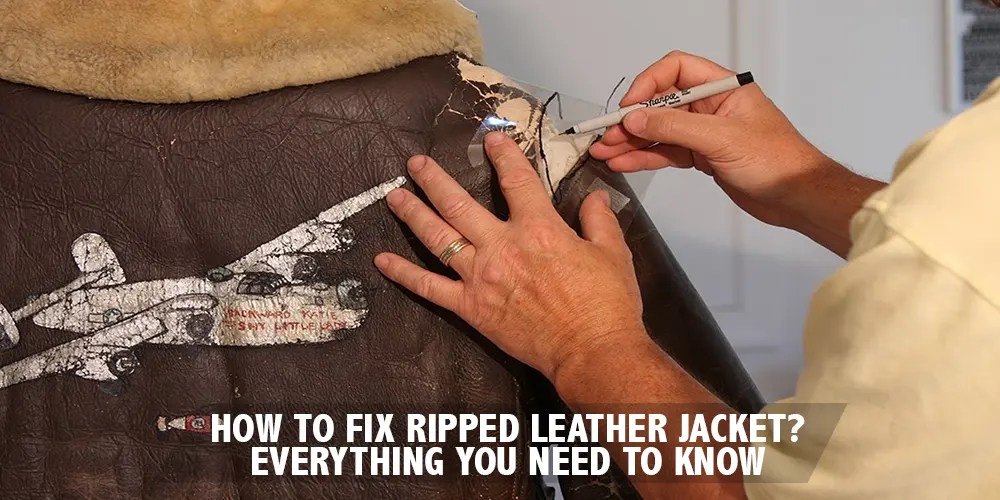How To Fix A Ripped Leather Jacket: A Complete Guide
Leather jackets are timeless pieces of clothing that not only provide style but also durability. However, over time, they can succumb to wear and tear, leading to unfortunate rips and tears. This article offers a comprehensive guide on how to fix a ripped leather jacket, ensuring that your beloved piece remains functional and fashionable for years to come. Whether it’s a small tear or a more significant rip, we’ll cover various methods and tips to restore your jacket to its former glory.
In this guide, we’ll explore the essential tools and materials needed for repairs, step-by-step instructions for different types of rips, and tips on how to prevent future damage. Additionally, we’ll provide insights into when it’s best to consult a professional. By the end of this article, you’ll have the knowledge and confidence to tackle your leather jacket repairs effectively.
So, if you’re ready to dive in and learn how to fix a ripped leather jacket, let’s get started on this journey to restore your favorite leather item!
Table of Contents
- Essential Tools and Materials
- How to Fix Small Tears
- How to Repair Medium Rips
- Addressing Large Damage
- Using Patches for Repair
- When to Seek Professional Help
- Preventing Future Damage
- Conclusion
Essential Tools and Materials
Before you begin repairing your leather jacket, it’s essential to gather the right tools and materials. Having everything on hand will make the process smoother and more efficient. Here’s a list of what you’ll need:
- Leather adhesive or glue
- Leather patches (if necessary)
- Scissors
- Needle and thread (preferably heavy-duty or leather thread)
- Sandpaper (optional)
- Clean cloth
- Leather conditioner
How to Fix Small Tears
Small tears can often be repaired easily at home. Here’s a simple step-by-step guide to fixing small rips in your leather jacket:
- Clean the area around the tear using a clean cloth to remove any dirt or debris.
- Apply a small amount of leather adhesive directly to the tear, ensuring that it penetrates both edges of the rip.
- Press the edges of the tear together firmly and hold them in place for a few seconds.
- Wipe away any excess glue with a clean cloth.
- Allow the adhesive to dry completely according to the manufacturer’s instructions.
- Once dry, apply a leather conditioner to restore moisture and flexibility.
How to Repair Medium Rips
For medium-sized rips, you may need to take additional steps to ensure a strong repair. Follow these instructions:
- Clean the area around the rip thoroughly.
- Cut a leather patch slightly larger than the rip.
- Apply leather adhesive to the patch and the surrounding area of the rip.
- Position the patch over the rip and press down firmly.
- Use a needle and thread to sew around the edges of the patch for added security. Make sure to use heavy-duty thread.
- Allow the adhesive to dry, then apply leather conditioner.
Addressing Large Damage
Large rips or tears might require more extensive work. If the damage is significant, consider these steps:
- Assess the extent of the damage to determine if a patch is necessary.
- If a patch is needed, choose a piece of leather that matches your jacket.
- Follow the same steps as for medium rips, ensuring the patch is securely attached and sewn in place.
- For large areas, consider reinforcing the patch with additional stitching across the surface.
Using Patches for Repair
Patching is an effective way to fix rips and adds a unique touch to your leather jacket. Here’s how to do it:
- Select a patch that complements your jacket. This could be a contrasting color or a design you love.
- Follow the cleaning and adhesive steps as mentioned before.
- Stitch the patch in place if you desire added durability.
- Finish by applying leather conditioner to maintain suppleness.
When to Seek Professional Help
While many minor repairs can be done at home, some situations call for professional intervention. Consider seeking help if:
- The damage is extensive and beyond your capability to fix.
- You are unsure about the repair process and want a guaranteed result.
- You want to maintain the resale value of a high-end leather jacket.
Preventing Future Damage
To keep your leather jacket looking great and minimize the chances of future rips, consider these preventive measures:
- Store your jacket properly, away from direct sunlight and moisture.
- Avoid overstuffing pockets to reduce stress on seams.
- Regularly condition the leather to keep it supple and prevent cracking.
- Be mindful of sharp objects that could snag the leather.
Conclusion
Fixing a ripped leather jacket doesn’t have to be a daunting task. With the right tools, materials, and techniques, you can restore your jacket to its former glory. Whether you’re dealing with small tears or larger damage, the steps outlined in this guide will help you through the repair process effectively. Don’t forget to take preventive measures to keep your leather jacket looking its best in the future!
If you found this article helpful, please leave a comment below or share it with your friends. For more tips on leather care and maintenance, explore our other articles!
Thank you for reading, and we hope to see you back on our site soon!
Stephanie Bauer Wiki: Exploring The Life And Career Of A Rising Star
His And Her Tattoos Small: A Beautiful Expression Of Love And Connection
A Long Paragraph For Your Boyfriend: Expressing Love In Words


